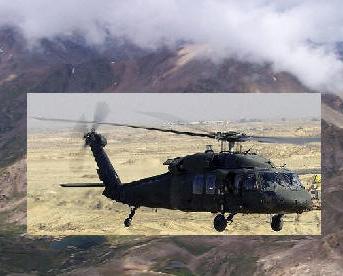
NEWSROOM
 |
NEWSROOM |
<
|
|
|
|
|||
|
By Mike Mitchell |
||||
 |
January 23, 2010 -
Back on August 19, 2009, An Army MH-60 Black Hawk helicopter out of
The investigation
determined there were no mechanical failures. However, the MH-60 Black
Hawk helicopter did not have adequate engine power for the high altitude
landing it was attempting to make at 14,421 feet mean of sea level at
Mount Massive |
|||
|
The Sikorsky MH-60 Black Hawk helicopter has a Service Ceiling under
normal conditions 19,1510 ft MSl at (ISA day) (International Standard
Atmosphere) which is standard temperature, pressure and density. Its
Hovering Ceiling MRP-OGE 95°F at 7,650 feet and 70°F at 9,375 feet.
Standard Day 11,125 feet.
The pilots were identified as Terrance W. Geer, 40, and Robert M.
Johnson, 41. Both pilots were instructor pilots. Also killed were Chad
A. Tucker, 28, a helicopter mechanic, and Paul R. Jackson, 33. The UH-60 Black Hawk is a four-bladed, twin-engine, medium-lift utility helicopter manufactured by Sikorsky Aircraft. Sikorsky submitted the S-70 design for the United States Army's Utility Tactical Transport Aircraft System (UTTAS) competition in 1972. The Army designated the prototype as the YUH-60A and selected the Black Hawk as the winner of the program in 1976, after a fly-off competition with the Boeing Vertol YUH-61. The UH-60A entered service with the Army in 1979, to replace the UH-1 Iroquois as the Army's tactical transport helicopter. The UH-60 features a four-blade main and tail rotors and is powered by two GE T700 turbo shaft engines. It has a long, low profile shape to meet the Army's requirement for transporting aboard a C-130 Hercules. It can carry 11 troops with equipment, lift 2,600 lb (1,170 kg) of cargo internally or 9,000 lb (4,050 kg) of cargo (for UH-60L/M) externally by sling. |
||||
|
The Black Hawk
helicopter series can perform a wide array of missions, including the
tactical transport of troops, electronic warfare, and aeromedical
evacuation. A VIP version known as the VH-60N is used to transport
important government officials (e.g., Congress, Executive departments)
with the helicopter's call sign of "Marine One" when transporting the
President of the
The UH-60 can be
equipped with stub wings at top of fuselage to carry fuel tanks or
possibly armament. The initial stub wing system is called External
Stores Support System (ESSS). It has two pylons on each wing to carry
two 230 The unit cost varies with the version due to the varying specifications, equipment and quantities. For example, the unit cost of the Army's UH-60L Black Hawk is $5.9 million while the unit cost of the Air Force MH-60G Pave Hawk is $10.2 million. |
| ©AvStop Online Magazine Contact Us Return To News |
|